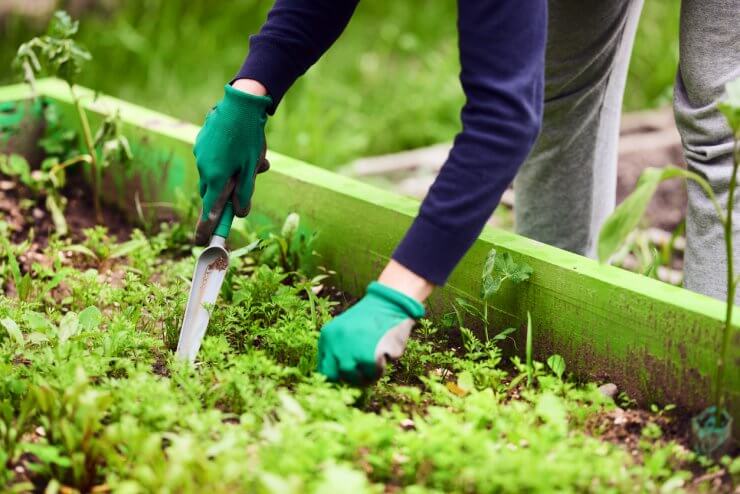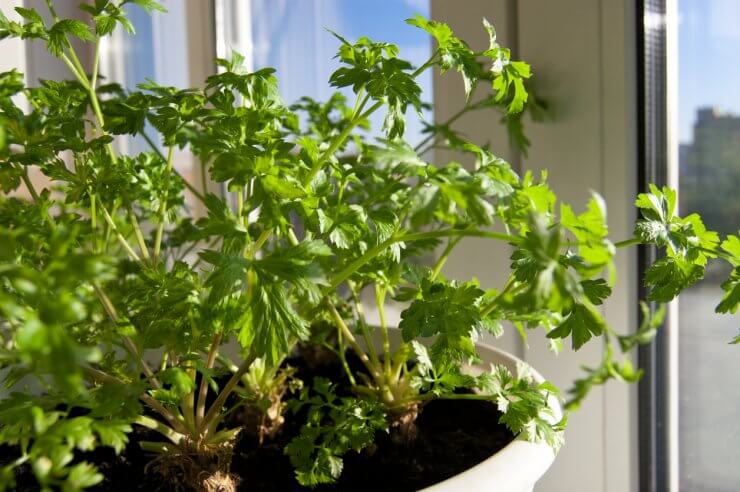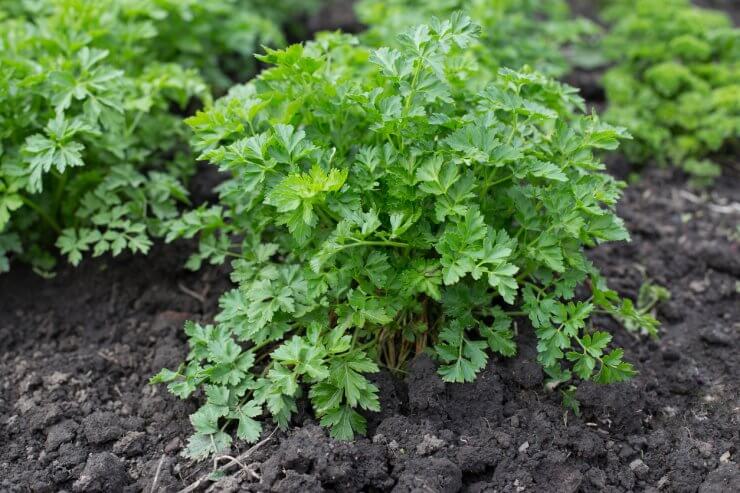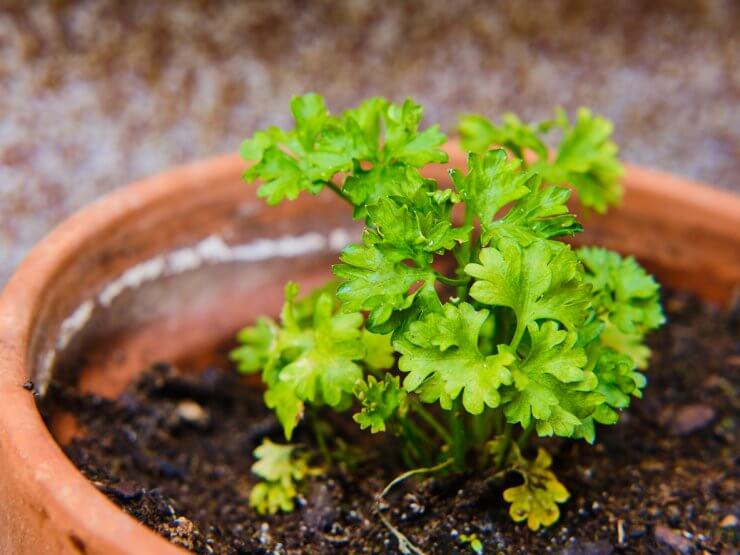
Parsley and other herbs in a raised bed
After choosing which varieties of parsley you’ll grow, then you need to decide where and how you’ll plant them.
Growing Indoors

Growing parsley on a windowsill
You can grow parsley plants indoors, all year long, as long as you have the right sunlight, soil, and temperature conditions. Try a warm, bright window sill—or a greenhouse, if you have one. Even so, you might find that window glass can decrease the amount of sunlight the plants receive, causing weaker plants to emerge.
When planting indoors, choose a container with drainage holes, add a soil-less potting mix (garden soil is too heavy to use in a pot), and sow seeds 1 to 2 inches apart and about 1/4 inch deep.
Growing Parsley in Open Land or in Raised Beds

Parsley in open land
Parsley can grow up to 24 inches in height, depending on the variety and conditions. Make sure you space plants about 9 to 12 inches apart for best results.
Parsley is an excellent companion plant for both indoor and outdoor gardens. Planting parsley wards off insects and helps other plants in the garden thrive. Asparagus and parsley are great companion plants, and parsley attracts hoverflies that prey on aphids (which can attack tomato plants)—that’s when parsley becomes a “trap crop” for luring aphids away from your tomatoes.
Creating raised beds for your garden can be a lot of work the first time you set up your beds. But, having raised beds allows you more control over your growing environment. You’ll discover that watering, irrigation, weeding, and even harvesting are much easier—with items closer to your reach and contained in a space that is more manageable than growing in open land. And once you create your raised beds the first time, subsequent years will be easier.
And for decorative parsley, a raised bed is a great way to edge your garden with beautiful plants that also deliver a harvest for your kitchen!
Growing Parsley in Containers or Pots

Parsley in containers
If you don’t have the space for growing in open land or in raised beds—let’s say you live in an apartment with no land of your own for a garden, for example—you can grow parsley in containers or pots on your balcony, porch, patio, or deck.
One great advantage to container gardening for parsley is the ability to move plants around more easily to maximize their exposure to the sun and to properly give sun and shade to seedlings vs. mature plants. Tip: If you have trouble moving pots around—because they’re too heavy or too bulky—try putting your pots on slightly raised rolling casters, so you can more easily move them around your space.
The potted patio parsley is very common; you just have to know the right way to do container gardening for parsley. For example, you have to be more vigilant about watering and drainage when using containers or pots—plants can dry out much faster, and your parsley can be more prone to root rot when over-watered.
Choose a container with drainage holes and place your parsley pots in the brightest light possible if planting indoors. And you can use pots as small as 6 to 8 inches deep.
When your pots of parsley are close by, it’s easy to clip your harvest and use it fresh-off-the-plant for your recipes! Just remember to clip fresh parsley right before you’re going to use it—even letting fresh parsley sit for 30 minutes on your counter will deflate the flavor and can make it go limp.
How do you grow your parsley—indoors, in open land, in raised beds, or in containers? Why do you prefer your method? Please tell us your tips and tricks for creating an awesome parsley garden.


 Previous
Previous

